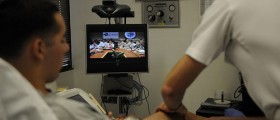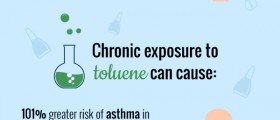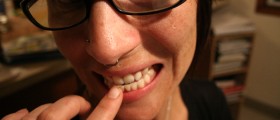
Cuticle infection is a condition taking place due to bacterial, fungal or yeast activity, affecting the area near the nail bed. Usually, this infection appears on a place where the finger was injured. There are two major types of this infection – acute and chronic.
Types of Cuticle Infection
If the cuticle infection is acute, it manifests through swelling and pain, both appearing suddenly. Even though any kind of injury to the area may lead to infections of this type, nail biting or picking the skin around he nails are the most common causes of this problem. Whenever these injuries are created, harmful microorganisms settle on the spot, triggering the infection. As for chronic cuticle infection, it affects a single nail initially, advancing on others in time, leading to redness, tenderness and swelling in the fingernail area.
Reasons behind Cuticle Infection
As it was mentioned above, bacteria, yeast and fungi may cause this infection, when these organisms reach the injured spot near your nail bed. People who trim their nails too harshly, or use strong nail polishers belong to a special risk group for developing cuticle infections, along with people who suffer from diabetes or a certain fungal infection.
Signs and Treatment Regarding Cuticle Infection
Basically, cuticle infection manifests through pain and swelling, along with the redness affecting the edges around the nail. Sensitivity to the touch may be present and the nail itself may become a bit disconnected from the nail bed. Pus formation can be present too, through tiny blisters which might form, mostly due to a bacterial infection. Finally, nail discoloration or deformation can occur as well.
Treatment of cuticle infection depends on its type. First of all, acute conditions of this type are dealt with differently that the chronic infections of cuticles. The acute type is usually triggered by bacteria, being treated with antibiotics taken orally and applied topically. The chronic variant is caused by fungi in most cases and requires a longer treatment, using anti-fungal creams.
As for home remedies and treatments, warm water soaks can relieve you of the discomforts of your bacterial infection, regarding pain and inflammation. White vinegar can be a great alternative too. In cases of fungal infections, make sure you keep the area clean, applying anti-fungal creams frequently. You can also consult with your doctor about drying out the area, killing the fungi.
Ultimately, since prevention is the best possible cure, keep your fingers safe from injuries and wash your hands often, preventing these infections from ever taking place.



_f_280x120.jpg)













Your thoughts on this
Loading...